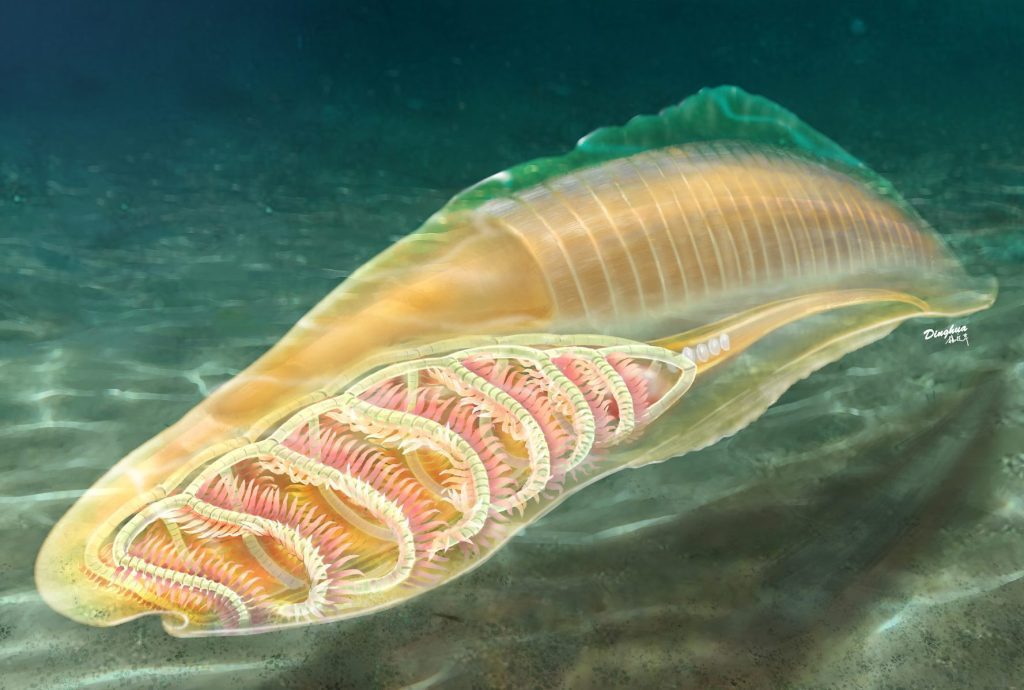What was the beginning of evolution that led to the organisms to which we belong? New discoveries of a mysterious creature in the Cambrian Sea have now shed light on the early evolutionary history of vertebrates: Researchers have discovered properties in the roughly 518-million-year-old Yunnanzon fossils that make these creatures emerge as the oldest known members of the group that make up. So vertebrates evolved.
A young shoot formed, became stronger and stronger and eventually branched out abundantly: life on our planet grew like a tree, as they say. First, multicellular organisms appeared from microbes, then the first animals appeared in the stage of evolution, which later produced more complex forms. This is how the basic lines of evolution appeared, to which today’s animals can still be assigned. Vertebrates, which include fish, amphibians, reptiles, birds, and mammals, have features such as a backbone and a skull. It is assumed that vertebrates once arose from the ancestors of invertebrates, since the bases of these physical characteristics gradually formed.
The controversy over the Cambrian organisms
How exactly this happened and what the early representatives of this evolutionary history would have looked like remains an exciting scientific question. An important aspect is the potentially oldest known fossil organisms that can be clearly linked to the evolution of vertebrates. In this regard, there has been a debate among paleontologists for about 30 years about strange sea creatures whose fossils were found in the Chinese province of Yunnan.
These organisms, called Yunnanozoa, have been dated to about 518 million years ago. They had worm-like properties, but also appeared structures that some scientists have interpreted as prototypes of so-called gill arches. They are anatomical features consisting of the muscles, bones, and connective tissue of parts of the face and neck in vertebrates. However, how exactly Yunnanozoa structures are allocated remains controversial to date.
Researchers led by Chenqi Tian of Nanjing University are now presenting the results of the newly discovered Yunnanzuan excavations. As they explain, the 127 samples in all show surprisingly well-preserved carbonaceous remains, which allowed them to perform previously impossible structural studies and detailed geochemical analyzes of the former body structures of Yunnanozoans. Several modern methods of analysis have been used, including X-ray microscopy, scanning electron microscopy and transmission.
The basal position is activated in the descent
The researchers were able to confirm that Yunnanozoa has cellular chondrocytes structures in the pharynx that form a type of pharyngeal skeleton. Specifically, they found that there are seven arcs formed by the extracellular matrix of so-called microfibers. All of these modules have their own sub-segments and appendices. The adjacent arches were joined by dorsal and ventral horizontal bars, forming a kind of basket. According to scientists, this combination of tissues and structures is a hallmark of vertebrates: a basket-like pharyngeal skeleton can still be found today in jawless fish such as lamprey and hagfish, which are considered primitive, Tian and colleagues explain.
Scientists conclude that new anatomical discoveries support the evolutionary classification of Yunnanozoa in the core of the vertebrate tree of life. With a lifespan of about 518 million years, they now represent the oldest known organisms that can be clearly assigned to the phylogenetic group from which vertebrates – and ultimately us – arose.
Source: Nanjing Institute of Geology and Paleontology, Chinese Academy of Sciences, article: Science, doi: 10.1126/science.abm2708

“Total coffee aficionado. Travel buff. Music ninja. Bacon nerd. Beeraholic.”







More Stories
Researchers detect extremely high-energy gamma rays
Anxiety disorders in old age increase the risk of dementia
Researchers are particularly fascinated by these exoplanets.